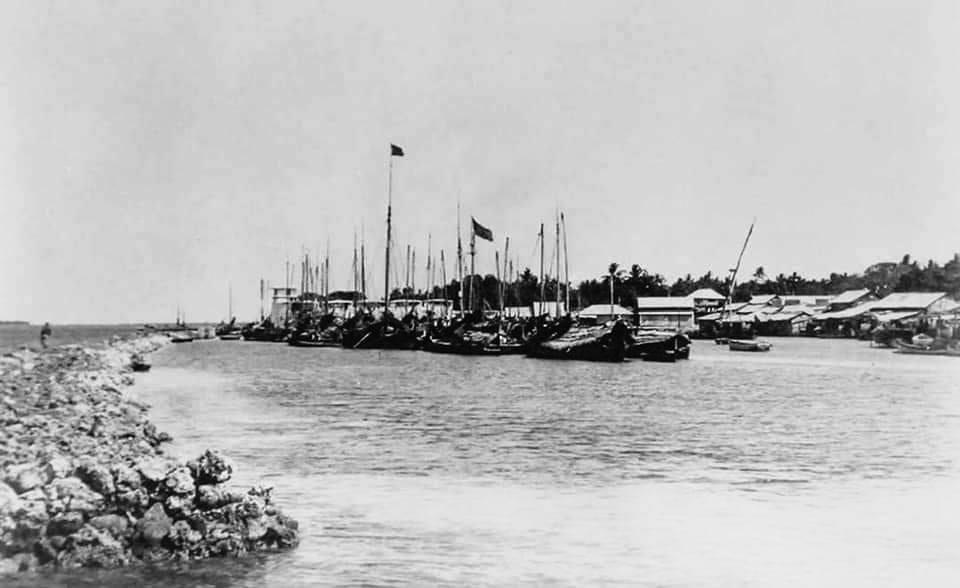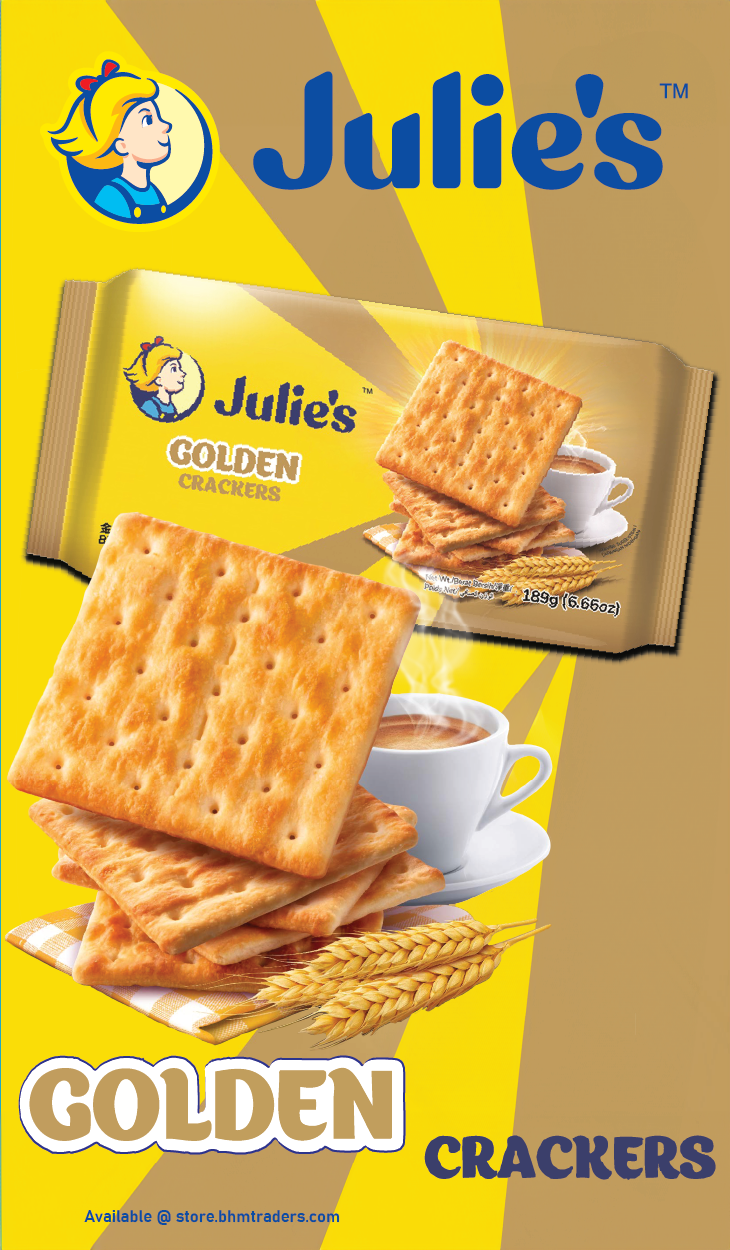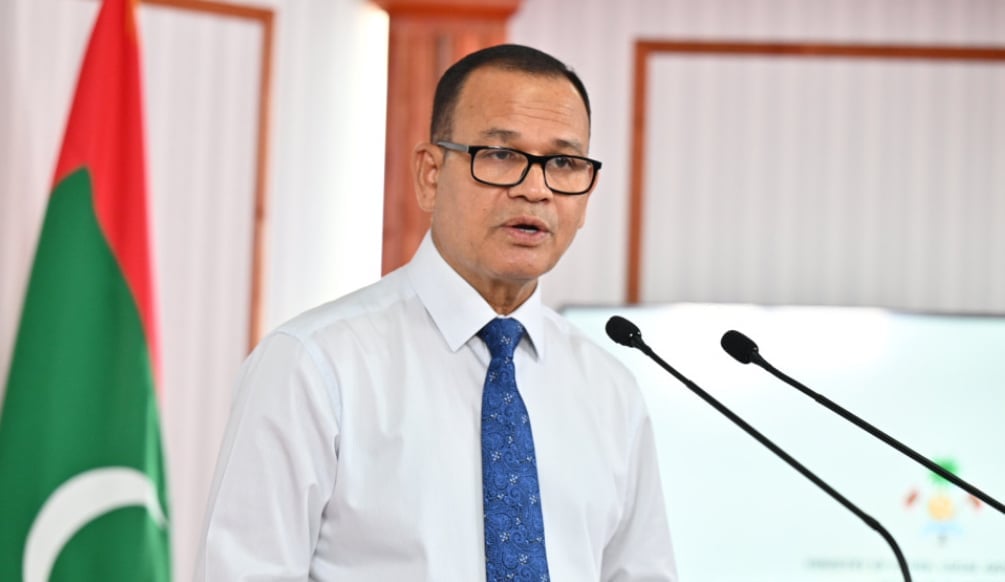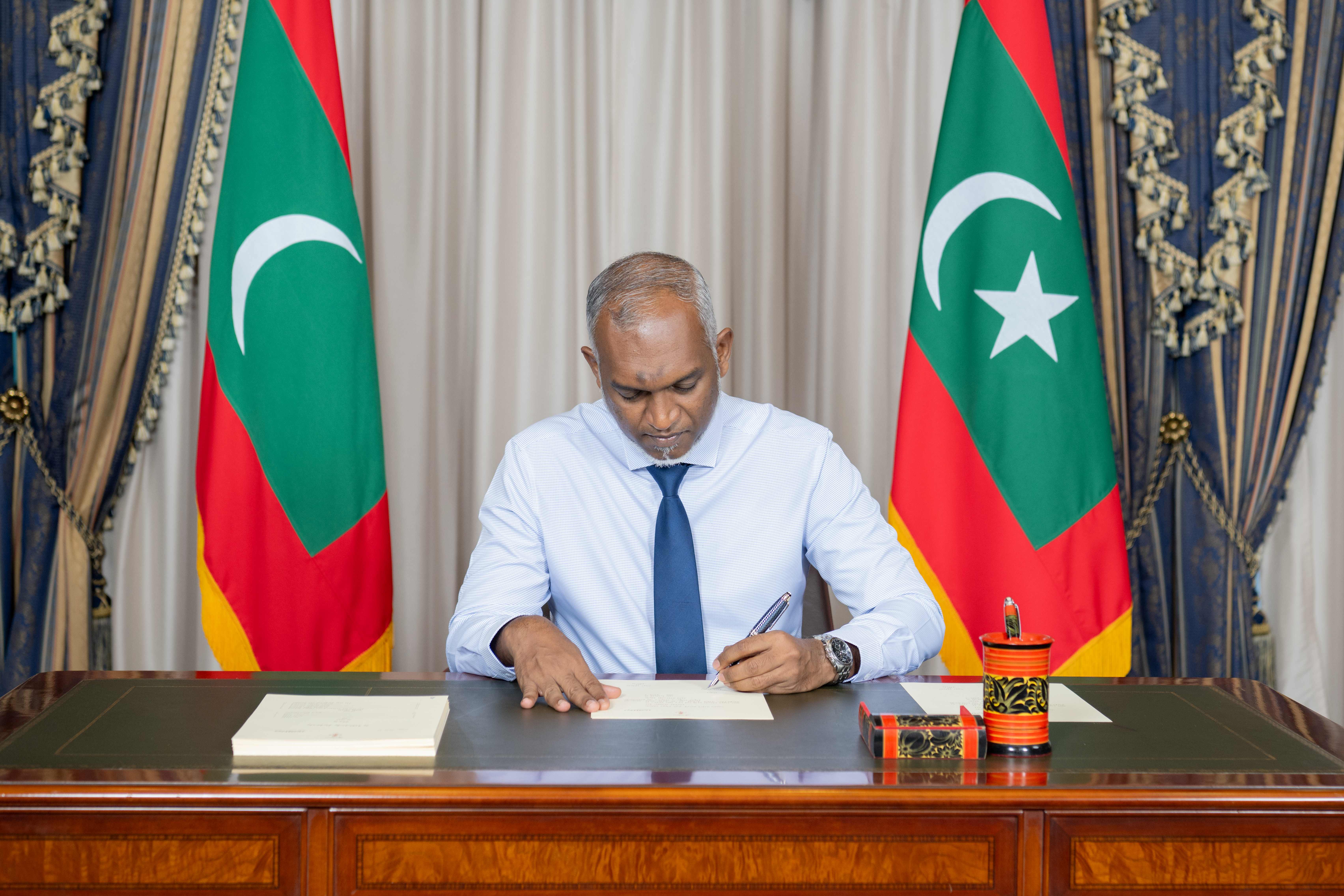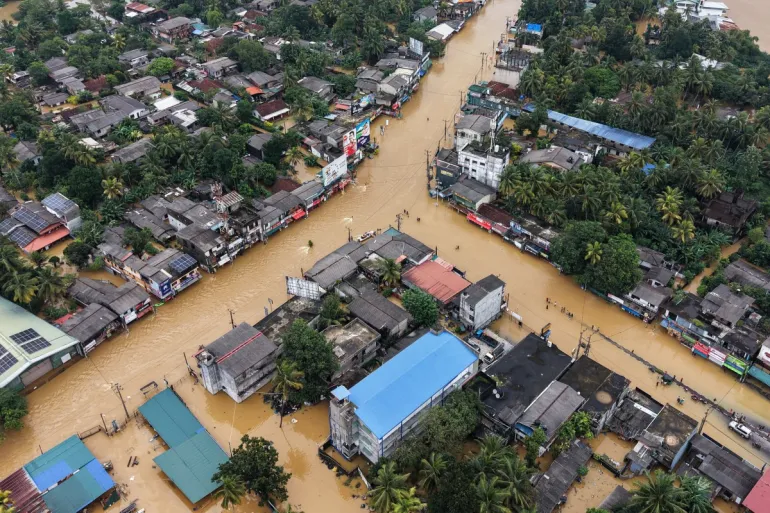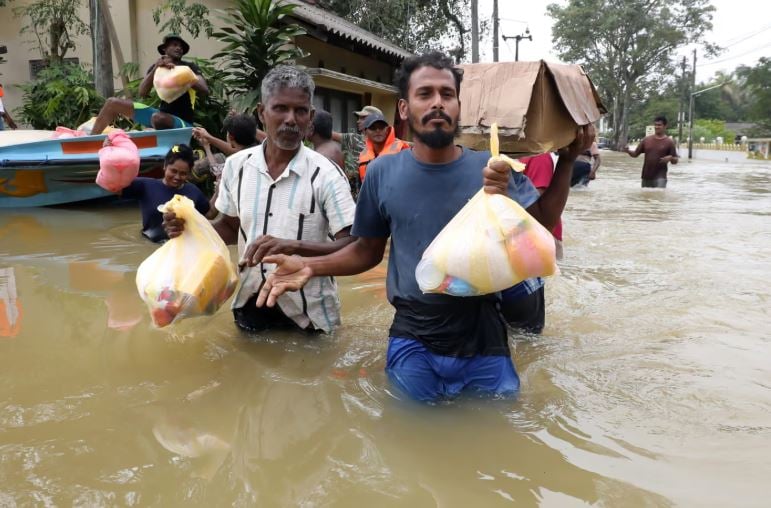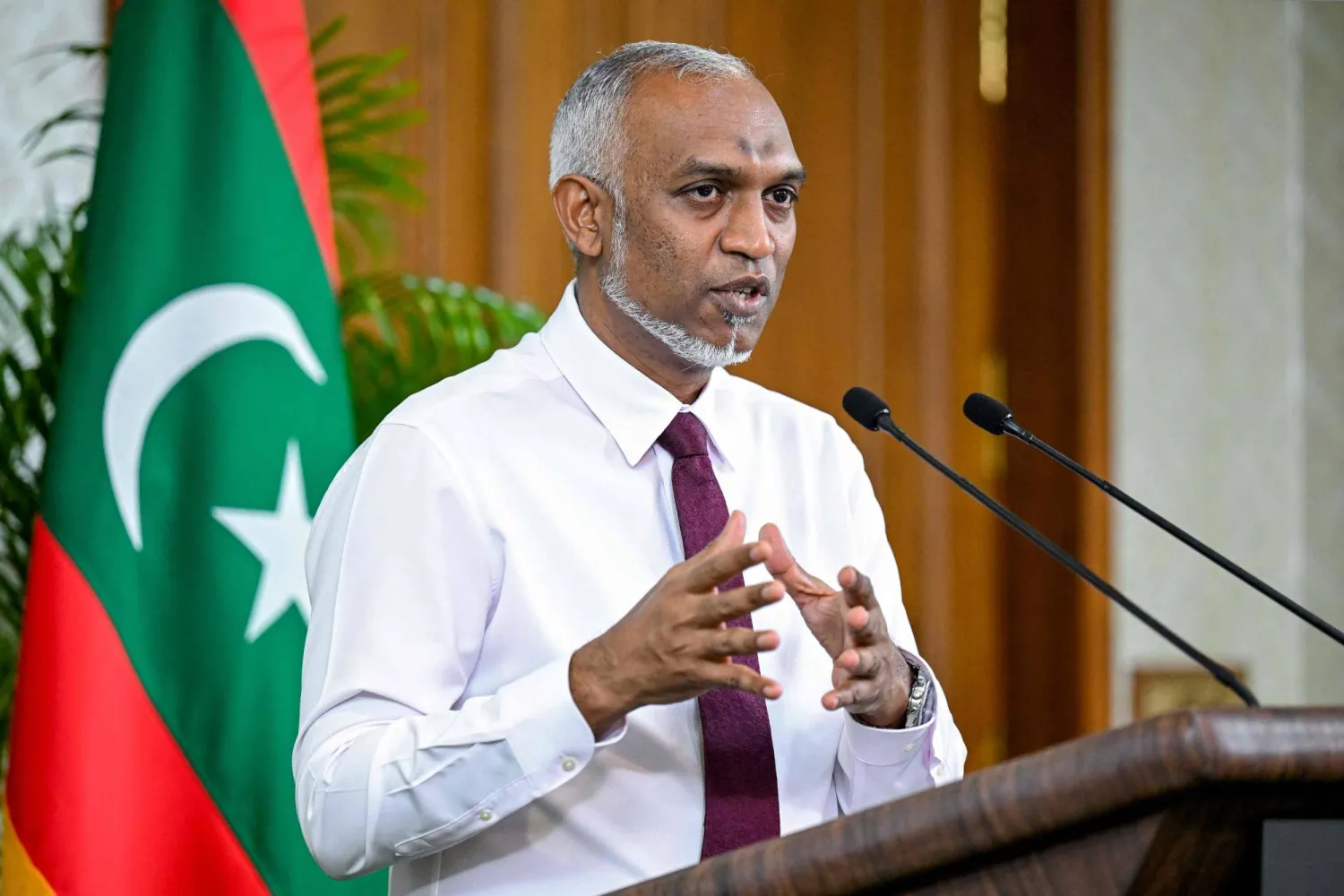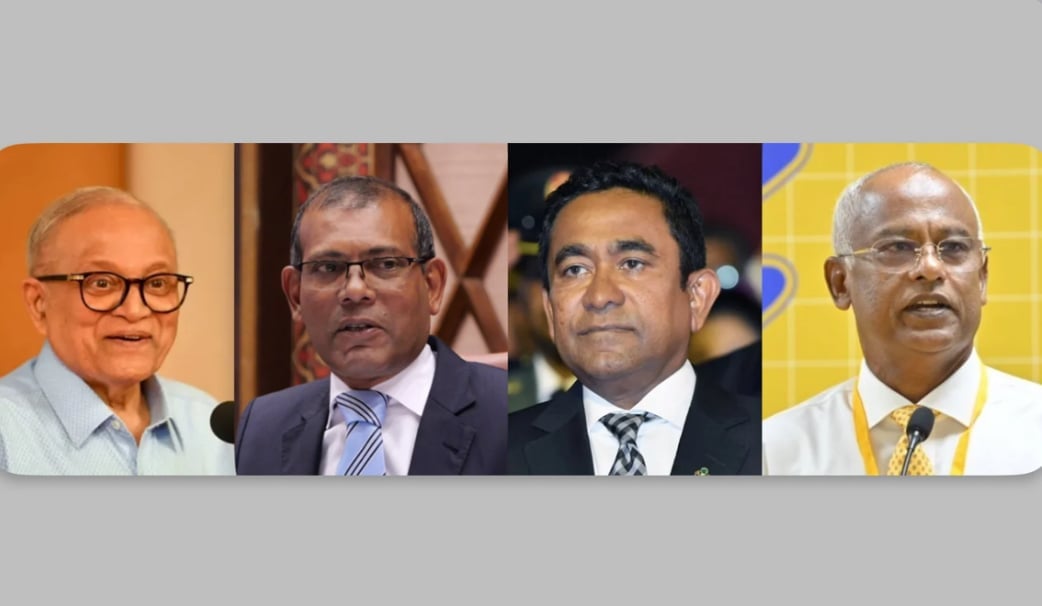(This is a series of articles, rewritten and translated from the 'Dhivehi Thaareekh' book compiled by a committee appointed by Sultan Muhammad Imaduddin VI in 1902 CE / 1320 AH to write the history of the Maldives in Dhivehi language.)
In the year 1029 AH (1620 CE), following the death of Hussain Faamuladheyri Kilagefaanu, Kalhu Thukkalaa ascended to the throne. This king's official name was Sultan Muhammad Imaduddin. In Dhivehi, his royal title was Kula Sundura Kattiri Bavana Mahaa Radhun. This king married Aisha Rani Kilagefaanu, who had previously been married to the two former kings, Hussain Faamuladheyri Kilagefaanu and Kalaafaanu before him. From this queen, the king had a son named Ibrahim.
After the birth of his son, the king rebuilt the dilapidated royal palace. He constructed a wall around the palace and installed gun ports in it. Additionally, he dug a moat around the outer wall of the palace, enhancing its defensive capabilities and strengthening the overall power of the kingdom.
In the fifth year of this king's reign, a Portuguese man named Balbagi (Belliago) came with a group of Portuguese in a warship heavily armed with weapons to wage war against the Maldives. In response, the king gathered his ministers, nobles, and soldiers, and made them take an oath not to retreat from the battlefield. At this assembly, the Chief Justice spoke and encouraged them to fight against the infidels.
When the Portuguese came to attack the Maldives, Male' was an island with no defensive infrastructure. There was no large wall or fortification around the island. There were only five large cannons. However, the Maldivian Muslims bravely stood up to defend their country, confronting the enemy with courage despite their limited resources. Although the enemy ship continued to fire, they were eventually defeated by the determination of the Maldivians, forcing them to abandon the battlefield and flee. The Muslims suffered minimal losses in this battle. However, as the Portuguese sailed back to Goa, they stopped at Villingili island in Male' Atoll and set fire to the mosque there. This incident occurred in the year 1034 AH (1624/1625 CE).
Drawing from the experience gained in this war, the King began efforts to strengthen the country's defense system. He built the Great Fort connected to the royal palace, constructed bastions, and created gun ports. He also built bastions and gun ports in other areas of Male'. He erected walls between every two bastions and made gun ports in these walls as well. In this way, he ensured there was no way for enemies to enter the island. Additionally, he built a seawall around the island and created channels for boats and ships to enter and exit. All these works were done to ensure the safety and security of the nation.
To strengthen the kingdom's defensive power, after reinforcing Male's security system, due to the scarcity of cannons used as weapons of war in the Maldives, he sent a ship to Aceh to acquire more cannons. Ali Maalimee from Kun'burudhoo was assigned to be the navigator for this trip. This ship brought back fourteen cannons from Aceh. Later, by the grace of God, many more cannons were obtained due to foreign vessels running aground on Maldivian reefs. When such vessels were wrecked, the people on board would take only light, easily transportable items to save their lives and leave on lifeboats. As a result, all remaining goods on the ship would be acquired by the Maldivians.
Then, as the King's reign stabilized and became successful, and when the King's son named Ibrahim had grown up, the Queen's full brother, Saamiyaa Faarhanaa Kilagefaanu, attempted to seize the throne. This Faarhanaa Kilagefaanu was rebelling in Maafilaafurhi island in Faadhippolhu Atoll in the Northern Maldives. The King sent troops from Male' to Maafilaafurhi to arrest him. However, these troops were defeated in battle with the Kilagefaanu and returned to Male'. Despite sending troops many times, they were unable to arrest Faarhanaa Kilagefaanu. Then, the King adopted the strategy of capturing and arresting individual soldiers from Faarhanaa Kilagefaanu's forces. As his soldiers were arrested and he had fewer people to support him, he fled from Maafilaafurhi to Maliku (Minicoy). Then the King sent troops from Male' to Maliku (Minicoy) to capture him. When these troops reached Maliku (Minicoy), they found him inside a mosque, captured and arrested him, shackled him with silver chains, and brought him to Male'. He was later exiled to Fuvahmulah. He passed away on that island.
While Maldivian history does not mention the exact date or reason of Saamiyaa Faarhanaa Kilagefaanu's arrival in Maafilaafurhi, he was a person who rebelled against the Maldivian King, showed his strength, proclaimed himself king while residing in Maafilaafurhi, tricked the northerners into supporting him, and took goods belonging to the Malé government from the north. However, he was not officially established as a king in the same manner as the kingship in Male'.
King Muhammad Imaaduddin's capture of Saamiyaa Faarhanaa Kilagefaanu consolidated his power, saved him from adversaries, and brought all of the islands of Maldives under his rule. This king was a noble and wise ruler. When the Maldivian kingdom was in decline, this king revived and perfected the glory of the kingdom. He also eliminated oppression and discord among the people.
However, this king was strict and quick to anger. As proof of this, when the then Chief Justice, Muhammad Shamsuddin Bodu Fan'diyaaru Kaleygeyfaanu of Meedhoo, Addu Atoll, mistakenly changed just one phrase in a sermon while praying for the king one day, the king grew enraged and exiled him and his three sons to their own island. These three sons were likewise great scholars. Later, Muhammad Fan'diyaaru Thakurufaanu of Fonadhoo, Hadhdhumathi, who had served as Chief Justice during Kalaafaanu's rule, was brought in and named Chief Justice.
After reigning for 29 years, this Great King (Bodu Rasgefaanu) passed away on the 5th of Shawwal 1058 Hijri (23rd October 1648 CE).
In the year 1029 AH (1620 CE), following the death of Hussain Faamuladheyri Kilagefaanu, Kalhu Thukkalaa ascended to the throne. This king's official name was Sultan Muhammad Imaduddin. In Dhivehi, his royal title was Kula Sundura Kattiri Bavana Mahaa Radhun. This king married Aisha Rani Kilagefaanu, who had previously been married to the two former kings, Hussain Faamuladheyri Kilagefaanu and Kalaafaanu before him. From this queen, the king had a son named Ibrahim.
After the birth of his son, the king rebuilt the dilapidated royal palace. He constructed a wall around the palace and installed gun ports in it. Additionally, he dug a moat around the outer wall of the palace, enhancing its defensive capabilities and strengthening the overall power of the kingdom.
In the fifth year of this king's reign, a Portuguese man named Balbagi (Belliago) came with a group of Portuguese in a warship heavily armed with weapons to wage war against the Maldives. In response, the king gathered his ministers, nobles, and soldiers, and made them take an oath not to retreat from the battlefield. At this assembly, the Chief Justice spoke and encouraged them to fight against the infidels.
When the Portuguese came to attack the Maldives, Male' was an island with no defensive infrastructure. There was no large wall or fortification around the island. There were only five large cannons. However, the Maldivian Muslims bravely stood up to defend their country, confronting the enemy with courage despite their limited resources. Although the enemy ship continued to fire, they were eventually defeated by the determination of the Maldivians, forcing them to abandon the battlefield and flee. The Muslims suffered minimal losses in this battle. However, as the Portuguese sailed back to Goa, they stopped at Villingili island in Male' Atoll and set fire to the mosque there. This incident occurred in the year 1034 AH (1624/1625 CE).
Drawing from the experience gained in this war, the King began efforts to strengthen the country's defense system. He built the Great Fort connected to the royal palace, constructed bastions, and created gun ports. He also built bastions and gun ports in other areas of Male'. He erected walls between every two bastions and made gun ports in these walls as well. In this way, he ensured there was no way for enemies to enter the island. Additionally, he built a seawall around the island and created channels for boats and ships to enter and exit. All these works were done to ensure the safety and security of the nation.
To strengthen the kingdom's defensive power, after reinforcing Male's security system, due to the scarcity of cannons used as weapons of war in the Maldives, he sent a ship to Aceh to acquire more cannons. Ali Maalimee from Kun'burudhoo was assigned to be the navigator for this trip. This ship brought back fourteen cannons from Aceh. Later, by the grace of God, many more cannons were obtained due to foreign vessels running aground on Maldivian reefs. When such vessels were wrecked, the people on board would take only light, easily transportable items to save their lives and leave on lifeboats. As a result, all remaining goods on the ship would be acquired by the Maldivians.
Then, as the King's reign stabilized and became successful, and when the King's son named Ibrahim had grown up, the Queen's full brother, Saamiyaa Faarhanaa Kilagefaanu, attempted to seize the throne. This Faarhanaa Kilagefaanu was rebelling in Maafilaafurhi island in Faadhippolhu Atoll in the Northern Maldives. The King sent troops from Male' to Maafilaafurhi to arrest him. However, these troops were defeated in battle with the Kilagefaanu and returned to Male'. Despite sending troops many times, they were unable to arrest Faarhanaa Kilagefaanu. Then, the King adopted the strategy of capturing and arresting individual soldiers from Faarhanaa Kilagefaanu's forces. As his soldiers were arrested and he had fewer people to support him, he fled from Maafilaafurhi to Maliku (Minicoy). Then the King sent troops from Male' to Maliku (Minicoy) to capture him. When these troops reached Maliku (Minicoy), they found him inside a mosque, captured and arrested him, shackled him with silver chains, and brought him to Male'. He was later exiled to Fuvahmulah. He passed away on that island.
While Maldivian history does not mention the exact date or reason of Saamiyaa Faarhanaa Kilagefaanu's arrival in Maafilaafurhi, he was a person who rebelled against the Maldivian King, showed his strength, proclaimed himself king while residing in Maafilaafurhi, tricked the northerners into supporting him, and took goods belonging to the Malé government from the north. However, he was not officially established as a king in the same manner as the kingship in Male'.
King Muhammad Imaaduddin's capture of Saamiyaa Faarhanaa Kilagefaanu consolidated his power, saved him from adversaries, and brought all of the islands of Maldives under his rule. This king was a noble and wise ruler. When the Maldivian kingdom was in decline, this king revived and perfected the glory of the kingdom. He also eliminated oppression and discord among the people.
However, this king was strict and quick to anger. As proof of this, when the then Chief Justice, Muhammad Shamsuddin Bodu Fan'diyaaru Kaleygeyfaanu of Meedhoo, Addu Atoll, mistakenly changed just one phrase in a sermon while praying for the king one day, the king grew enraged and exiled him and his three sons to their own island. These three sons were likewise great scholars. Later, Muhammad Fan'diyaaru Thakurufaanu of Fonadhoo, Hadhdhumathi, who had served as Chief Justice during Kalaafaanu's rule, was brought in and named Chief Justice.
After reigning for 29 years, this Great King (Bodu Rasgefaanu) passed away on the 5th of Shawwal 1058 Hijri (23rd October 1648 CE).





